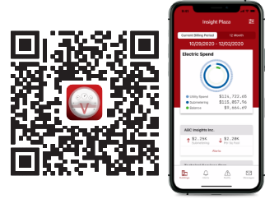The Energy Impact of Elevators
Inconsistent loads aren't necessary small. Learn what loads are normal and where you can optimize.
Because of their natural inconsistency, elevators are often considered incidental loads. However, inconsistent does not equate to inconsequential. Viewing an inconsistent load as necessarily small can lead properties to underestimate how much electricity their elevators consume and increase costs that needlessly affect the bottom line.
In the battle for building safety and efficiency, understanding elevator loads is essential. Experts estimate that elevators use between 3% and 10% of a building’s total electricity consumption. So what causes some of these differences, and what are some options to bring those demand values down?
The Ups and Downs of Elevator Usage
In 2020, a million U.S. elevators made 20.6 billion passenger trips totaling over 2.8 billion miles. Those numbers are impressive, but they're still just the raw totals. Like every building's operational systems, each elevator is a unique set of components designed to deliver according to individual criteria.
Also like buildings, the energy consumption of elevators is affected by many factors, including the type of elevator drive (hydraulic or traction, geared or gearless), the occupant levels, the cabin equipment, the height of the building, the efficiency of the control system, and the braking technology.
Despite all these variables, data is available for benchmarking average elevator electrical demand. The American Council for an Energy-Efficient Economy estimates typical consumption for a lightly loaded low-rise elevator at 1,900 kWh/yr and 15,000 kWh/yr for a heavily used elevator in a high-rise. A single elevator in a 30-story high-rise might use ~35,000 kWh per year, or about as much electricity as the average Midwestern home uses in 9 months.
These estimates hold up with our real-world experience. For example, demand for elevators in one mid-rise mixed-use building we monitor ranged between ~7200 kWh and ~28,000 kWh last year.
In addition to direct loads, elevators also have indirect energy costs that should be considered in a broader review of building efficiency. Most elevator braking systems dissipate energy as heat, which can add up to 30% to a building’s total cooling load.
Ways to Reduce Elevator Electric Load
Because elevators are not mass-produced widgets but custom-engineered systems, it's difficult to make general statements or recommendations for a specific building. But there are best practices that can kickstart the elevator efficiency journey.
Of course, machine efficiency and performance is often about maintenance. Elevators must be inspected and serviced regularly to maintain federal compliance. In addition, cities and states often have their own rules that impact this schedule, so check your local standards and codes to determine your specific requirements.
When it comes to the main components of an elevator, the car itself and the hoistways, these can last the life of the building. But given that each elevator carries an average of 20,000 people a year, some pieces of the system are naturally going to wear out with use, and others will be superceded by more efficient versions over time. The ACEEE recommends a renovation cycle of 20–30 years as a balance between capital investment and efficiency of operation. Depending on their vintage, upgrading your components can improve your elevator's efficiency by as much as 40%.
For example, switching to a regenerative braking system packs a double efficiency punch because it lowers both the overall electricity demand of the elevator and the total cooling demand by producing much less heat. In simulations of commercial mid-rise and residential high-rise buildings, regenerative brakes reduced elevator electricity use by 30% compared with standard geared traction systems.
But not all meaningful efficiencies require lots of capital. One of the most consequential ways that buildings can lower demand immediately is to evaluate their elevators' standby loads. Too many elevators stay on all day, even when no one is using them. The average standby power rating for an elevator is between 0.8 and 2 kilowatts, which can really add up for an elevator that’s “on” but not in use for 5,000 of the 8,760 hours in a year.
Actions to Consider
- Upgrading elevator controls can save energy by dispatching the elevators to make fewer stops.
- Changing to LED lighting and avoiding a dark cab interior can lower the cab’s stats from 5 w/sf to 1–1.5 w/sf.
- If you’re in a demand response program, shutting down one or an entire bank of elevators is an easy way to respond to the utility’s request for curtailment.
- And as always, avoid vendor lock if you can. Many elevator companies offer only proprietary products that obligate you to use only their parts & services (and prices). What may seem like a “deal” initially will likely cost you in the long run.
Interested in more on elevator engineering and impact?
Read more about elevator historyAbout utiliVisor
Your tenant submetering and energy plant optimization services are an essential part of your operation. You deserve personalized energy insights from a team that knows buildings from the inside out, applies IoT technology and is energized by providing you with accurate data and energy optimization insights. When you need experience, expertise, and service, you need utiliVisor on your side, delivering consistent energy and cost-saving strategies to you. What more can our 45+ years of experience and historical data do for you? Call utiliVisor at 212-260-4800 or visit utilivisor.com

